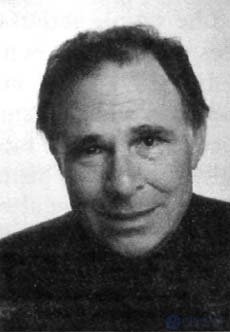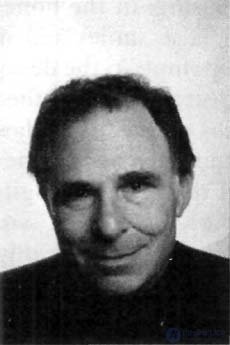Our conversation about the mimic signs of deception would be incomplete if we had not considered one of the most important facial expressions - a smile. A smile is different from all other expressions - it expresses joy with just one muscle, while three to five are required for the expression of other emotions. Thanks to its simplicity, a smile is recognized more easily than other emotions. We found that a smile can be discerned at a distance of 300 feet — more than for other facial expressions, and in a shorter time
[106] . It’s hard not to answer with a smile, people smile back, even if they look at a photo. As a rule, people are pleased to look at a smiling person, which is well known to those who are engaged in advertising.
However, most people underestimate a smile; it is not at all so simple, although people do not realize it. There are dozens of types of smiles, differing both externally and in content. Many positive emotions are accompanied by a smile: joy, physical and aesthetic pleasure, satisfaction, fun, etc. But people can smile and when it is not easy for them. And not the fake smile, which a person usually tries to convince others that he is good, often covering up negative emotions. We recently discovered that a fake smile may well be misleading. We asked the subjects to look at the photos of the smiles taken in our experiment with students, and to determine whether the smile is sincere (appeared while watching a pleasant movie) or unnatural (appeared when watching a movie with an abundance of blood). The results were not higher than random. And the problem here, in my opinion, is not the inability to identify a false smile, but in a simple misunderstanding of the fact that smiles are different. False smile is difficult to distinguish from sincere without first considering the main types of smiles. Below you will find a description of eighteen different types of only sincere smiles. A common element for all varieties of smiles is the change in facial expression caused by the main zygomatic muscles (zygomaticus musculus). These muscles go from the cheekbones through the entire lower part of the face and end at the corners of the mouth. While reducing, the zygomatic muscles raise the corners of the lips towards the cheekbones. Their strong contraction stretches the lips, lifts the cheeks, forming bags under the eyes and the so-called spider legs in the corners of the eyes. (For some, the tip of the nose also drops slightly, and for some people, the skin around the ears also stretches.) The combination of the actions of the zygomatic muscles and the action of others also forms different types of smiles. But some of their varieties are caused by the action of only other muscles, without the participation of the zygomatic.
A natural, relaxed and joyful smile is given only by the cheek muscles. In the expression of a sincere smile, other muscles of the lower part of the face do not participate; in the upper part, the only noticeable change can be the tension of the muscles around the eyes. These muscles, which produce most of the changes in the upper part of the face: the raising of the cheeks (pouches under the eyes, the spider legs), can also be reduced by the cheek muscles. Figure 5A shows a sincere smile. Such a smile lasts the longer and more pronounced the more pronounced the positive emotions experienced
[107] . I believe that all positive emotional experiences (happiness of a loved one, joy of relief, fun, satisfaction, pleasure from tactile, auditory and visual impressions) manifest themselves in a sincere smile and differ only in their intensity and duration.
 |  |  |
| Figure 5A | Figure 5B | Figure 5B |
| Sincere smile | Scared smile | Smile scorn |
A frightened smile (Figure 5B) has nothing in common with positive emotions, although it is sometimes confused with a smile of joy. It is caused by the muscles of laughter (risorlus musculus), stretching the corners of the lips towards the ears, so that the mouth takes the form of a rectangle. Although the word risorius, translated from Latin, means “laughing,” in fact, such a smile, as a rule, comes from fear, not from laughter. The reason for the confusion is most likely the fact that when the muscles of laughter stretch the lips horizontally, their corners slightly go up, reminding a very wide sincere smile. However, in the case of fear, such a change in the shape of the mouth (both with raising the corners of the lips and without it) is also accompanied by eyebrow and eye movement, shown in Figure 3B.
In the phrase "smile of contempt" the word "smile" is also not quite appropriate, because this expression is also not connected with positive emotions, although it is often inclined to interpret it that way. The expression of contempt (a variant of which is given in Figure 5B) includes a contraction of the muscles in the corners of the lips, causing a protrusion of the corners of the lips, often with “dimples”, and their slight bending upwards
[108] . In this case, the cause of confusion is the same elevation of the corners of the mouth, as with a sincere smile. Another common element is dimples, which also appear occasionally with a sincere smile. The main difference between a contemptuous smile and a sincere one is the tension in the corners of the mouth, which is characteristic only of a contemptuous smile.
With a restrained smile, a person actually experiences strong positive emotions, but tries not to show his joy in full force. The goal is to mute (but not suppress) positive emotions, to retain one’s emotional expressions, and perhaps even feelings, within certain limits. At the same time, the lips can be compressed, the lower one is protruding, the corners of the mouth are tense or lowered - any combination of these signs can also accompany a simple smile. Figure 5G shows a restrained smile, in which all three constraining factors are combined with a simple natural smile.
 |  |
| Figure 5G | Figure 5D |
| Restrained smile | Pitiful smile |
A miserable smile betrays a person’s negative experiences. It is not an attempt to hide the emotion and displays the actual state of the person. A miserable smile also says that a person, at least at the moment, is prone to accept his pitiful fate. We observed such smiles on the faces of people who sat in our laboratory and watched films with an abundance of blood, but did not even suspect that they were being shot. Usually this reaction comes soon enough, as soon as they understood what kind of film they were put to watch. We saw these smiles in patients in a state of depression, which was an excellent commentary on their unenviable share. Such smiles are often asymmetrical and are superimposed on frankly negative facial expressions, not covering them, but emphasizing them, or immediately following such negative expressions. A miserable smile, indicating attempts to control the manifestations of fear, anger, and grief, can often resemble a restrained smile. The lips are compressed, the lower one is protruding, the corners of the mouth are strained or lowered - all this can also serve as a means for restraining the surging feelings. The main difference between a miserable (see Figure 5D) and a restrained smile is the absence of all signs of muscle tension around the eyes. The action of these muscles or the appearance of the spider legs with a restrained smile is a sign of positive emotions, and their absence is a sign of negative emotions. A miserable smile can also be combined with the movements of the eyebrows and forehead, which testifies to the recognition by the person of his negative emotions.
It so happens that in one facial expression two or more emotions are experienced at once, experienced at the same time, and completely different combinations are possible. But now we consider only the combinations associated with positive emotions. For example, if a person experiences pleasure from his own anger, on his angry and contented face, narrowing of the lips and sometimes raising the upper lip will be combined with a sincere smile, while the expression of the upper part of the face will correspond to Figure 3B. (This expression is also called a cruel or sadistic smile.) On a contemptuous face, a sincere smile is combined with the tension of one or both corners of the mouth. Sadness and fear can also be enjoyable, for example, by the authors in the process of creating horrible or "tearing out" films and books. With a sad-contented smile, the corners of the mouth may be slightly omitted, or a sincere smile may be combined with the upper face expression shown in Figure 3A. For a scared-pleased expression, a combination of the upper part of the face, corresponding to Figure 3B, with a sincere smile and horizontal lips is characteristic. Sometimes pleasant experiences are in the nature of serene satisfaction, but sometimes joy brings with it excitement, evoking enthusiastic feelings. With an excited and satisfied facial expression, in addition to a sincere smile, the upper eyelids are lifted. The film actor Harpo Marx often demonstrates such an enthusiastic smile filled with joy, and when he fools around, he also depicts an angry, satisfied smile. With a surprised, satisfied facial expression, a sincere smile is complemented by upturned eyebrows, a raised upper lip and a lower jaw.
The other two types combine a sincere smile with a characteristic expression of the eyes. The flirting smile is sincere, although at the same time the seducer looks away from the object of his interest, and then again cast a sly glance at him, which, again, is instantly retracted, will hardly be noticed. The unusual impression of the famous Mona Lisa in part lies in the fact that Leonardo catches his nature at the very moment of this playful movement; turning her head in one direction, she looks in the other - on the subject of her interest. In life, this facial expression is fleeting - a look sneaking up for no more than a moment. With an embarrassed smile, the gaze is usually directed downward or to the side, which is explained by the desire to avoid meeting the interlocutor's eyes. Sometimes, in addition to a sincere smile, the chin fossa is raised for an instant (the area between the lower lip and the chin). In another embodiment, embarrassment is expressed by a combination of a restrained smile with a lowered or set aside look.
Chaplin's smile is unusual in that muscles are involved in it, which for most people cannot be controlled. A distinctive feature of Chaplin's smile was an arched lip raising, much stronger than with a sincere smile (see Figure 5E). This is a smile or a smile above.

Chaplin's smile The following four types of smiles look the same, but perform completely different social functions. Each of them is intentional and often asymmetric.
A grading smile softens the harsh, unpleasant tinge of critical facial expression and often forces you to smile back. Such a smile, as a rule, arises suddenly, while the corners of the mouth are usually strained, and the lower lip is often momentarily slightly jerked. The appraising smile is often emphasized by a slight nod of the head a little to one side, as a result of which it seems as if the person is looking a bit down.
A friendly smile emphasizes that a person is ready to swallow a bitter pill intended for him without objection. Naturally, no one takes this expression for a smile of joy; such a smile shows that a person is ready to agree with an undesirable turn of business. She looks like an appreciative smile, but does not have a corresponding head movement. Instead, eyebrows are usually raised for a moment, which is often accompanied by a sigh or a shrug.
A conciliatory smile governs the relationship between two or more interlocutors. This polite, friendly smile serves for a courteous expression of agreement, understanding. Such a smile, weak and asymmetrical, is usually not accompanied by the participation of the muscles surrounding the eyes.
The reciprocal smile is a special case of a conciliatory smile - the listener lets the speaker understand that he understood him perfectly and there is no need to repeat or express his thought in other words. This facial expression is equivalent to “hmm” or “yes-yes” interjections, usually accompanied by a nod of the head. The speaker knows that this smile is not evidence of the listener's feelings, but is only a sign suggesting that he continue.
Any of these four types of smiles - evaluating, pleasing, conciliatory, or responding - can sometimes be replaced with just a sincere smile. And for those who enjoy the above actions, these smiles are always natural, and, accordingly, sincere.
Consider now the feigned smiles. They serve to convince anyone of positive, not really experienced feelings. At the same time, a person may feel practically nothing or even experience negative emotions, which he will try to cover up with a feigned smile. Unlike the pitiful smile that bluntly declares the absence of joy, a feigned smile is designed to mislead and create the impression that a smiling person has pleasant feelings. Only such a smile is truly feigned.
There are a number of signs that distinguish the feigned, pretending to seem sincere, the smile from the truly sincere.
 |  |
| Figure 6 | Figure 5A |
| Feigned smile | Sincere smile |
A feigned smile is more asymmetric than sincere. Sincere smile is not accompanied by movement of the muscles located around the eyes. With a weak or medium feigned smile, the cheeks are not raised, there are no pouches under the eyes, spider legs and a slight lowering of the eyebrows, characteristic of a sincere smile. Compare the examples in Figures 6 and 5A. With a wide smile, the movement of the facial muscles (especially the main zygomatic muscles) lifts the cheeks, collects the skin under the eyes and forms wrinkles around the eyes. But eyebrows while not falling. If you look into the mirror and make your smile wider and wider, you will notice that as it increases, the cheeks rise and wrinkles form around the eyes, but the eyebrows will not drop until you use the muscles around the eyes. And although this lack of movement of the eyebrows is noticeably weak, it is a decisive sign that distinguishes a broad, fake smile from the present.
The feigned smile disappears, as a rule, out of time. It can disappear abruptly or fall apart into a series of fragments and, before disappearing completely, once again freeze on the face for a moment.
Covering smile extends only to the lower part of the face and lower eyelids. Despite such a smile, true signs of emotions such as fear or sadness can appear in the upper part of the face. But even on the lower part of the face, a feigned smile may not completely block the manifestations of pent-up emotions, instead, sometimes elements of both emotions mix, and some traces of mixed feelings remain on the face.
To test these hypotheses, we first decided to investigate the smiles of the students of the medical college who participated in our experiment. If my assumptions about smiles are correct, then smiles of female students captured while watching a nice movie should be sincere. And on the contrary, captured while watching a very unpleasant film - insincere. We paid attention only to two signs of feigned smiles - the absence of contraction of the muscles around the eyes and the presence of signs of disgust (wrinkled nose) or contempt (strain of the corners of the mouth). The results more than met all our expectations: in the first case there were more sincere smiles than feigned ones, and there were no signs of disgust or hostility, in the second one - all smiles were, as a rule, feigned. I was amazed not only by how correct these signs of deception turned out to be, but also by the fact that, in evaluating the behavior of others, people usually do not attach importance to them. When we showed videos of these expressions and asked people to determine where the students lie and where not, the results, as a rule, were no different from simple guessing. What is the matter? Or do we pay attention to something that is too elusive for the ordinary look? Or people just do not know what to look for? In our next experience, we decided to find out and, having trained people to see whether the eye muscles are involved or not, to see how much more accurately they can detect a lie.
The face gives numerous signs of deception, such as micro-expressions, blurred expressions, true signs of emotion, blinking, dilated pupils, tears, blush and pallor, asymmetry, excessive duration and untimely, as well as fake smiles. Some of these signs give out hidden feelings, others indicate the fact of hiding something, while others simply say that the facial expression is fake.
Mimic signs of deception, as well as signs of deception, manifested in words, voice and body movements, differ in the nature of the information they communicate. Some signs allow you to say with certainty what feelings a person actually feels, despite all his attempts to hide them. Other signs only make it possible to determine whether hidden emotions are positive or negative, without indicating specific emotions. There are signs that are even more blurred, allowing you to say only that the liar is actually experiencing some other emotions, but positive or negative is unknown. However, sometimes this is enough. Seeing the traces of any hidden emotions, it can already be assumed that the person is lying, except, apparently, in those cases where the cheater does not feel any emotions at all.In some cases, it is impossible to uncover a lie without an exact knowledge of what a person actually experiences. It depends on the nature of the lie, the chosen line of conduct, the situation and the presence of any other explanations for why the person is trying to hide his feelings.To uncover a lie, it is important to remember that some of its signs provide us with accurate, while others give only the most general information. In the application, Table. 1 “Conformity of types of silenced information to behavioral manifestations (classification by behavioral manifestations)” and Table 2 “Compliance of types of suppressive information with behavioral manifestations (classification by types of information)” contains all the signs discussed in this and previous chapters, and Table. 3 "Signs of fake emotions" lists the signs of fake emotions.







Comments
To leave a comment
Psychology of lies
Terms: Psychology of lies